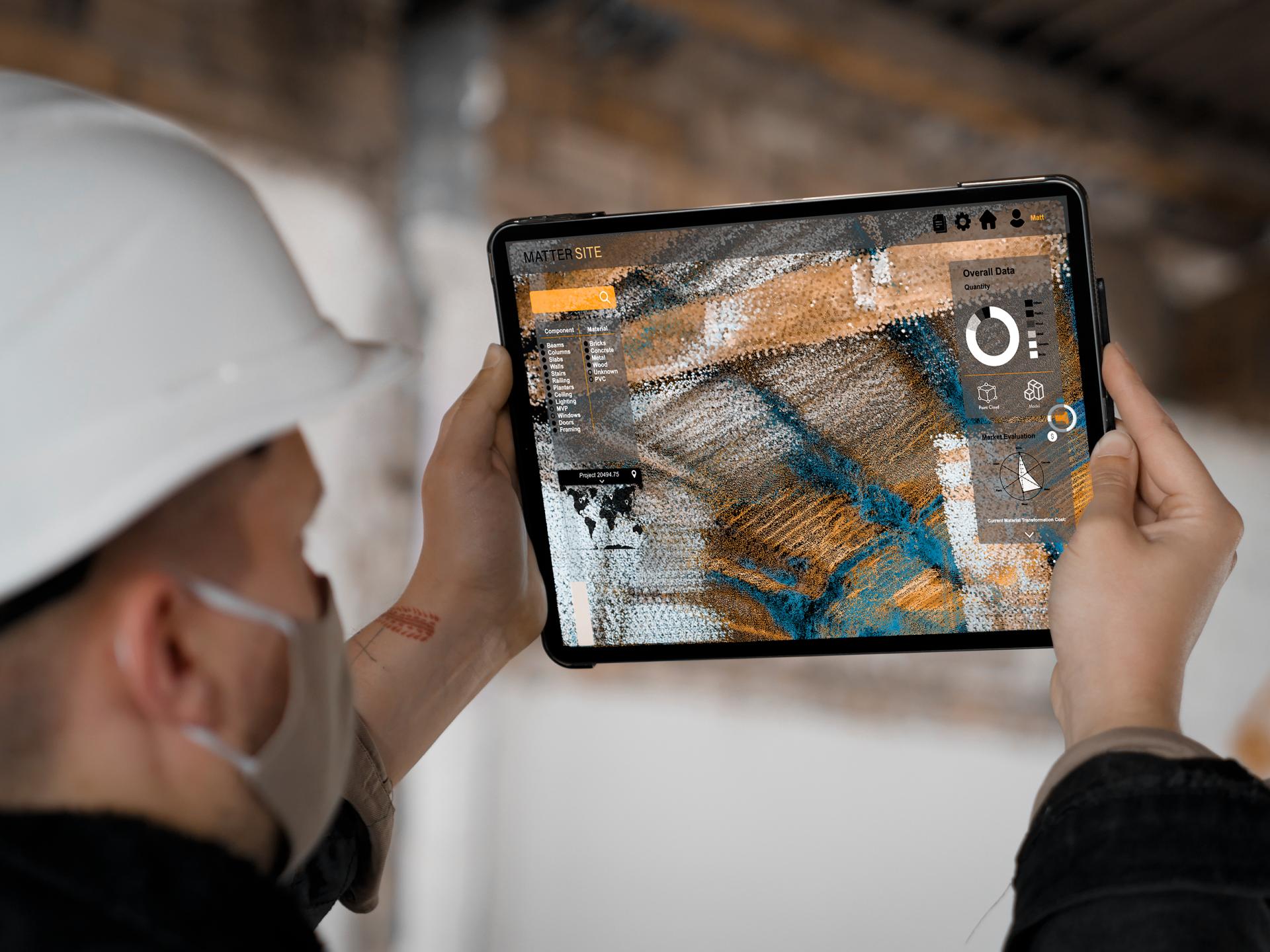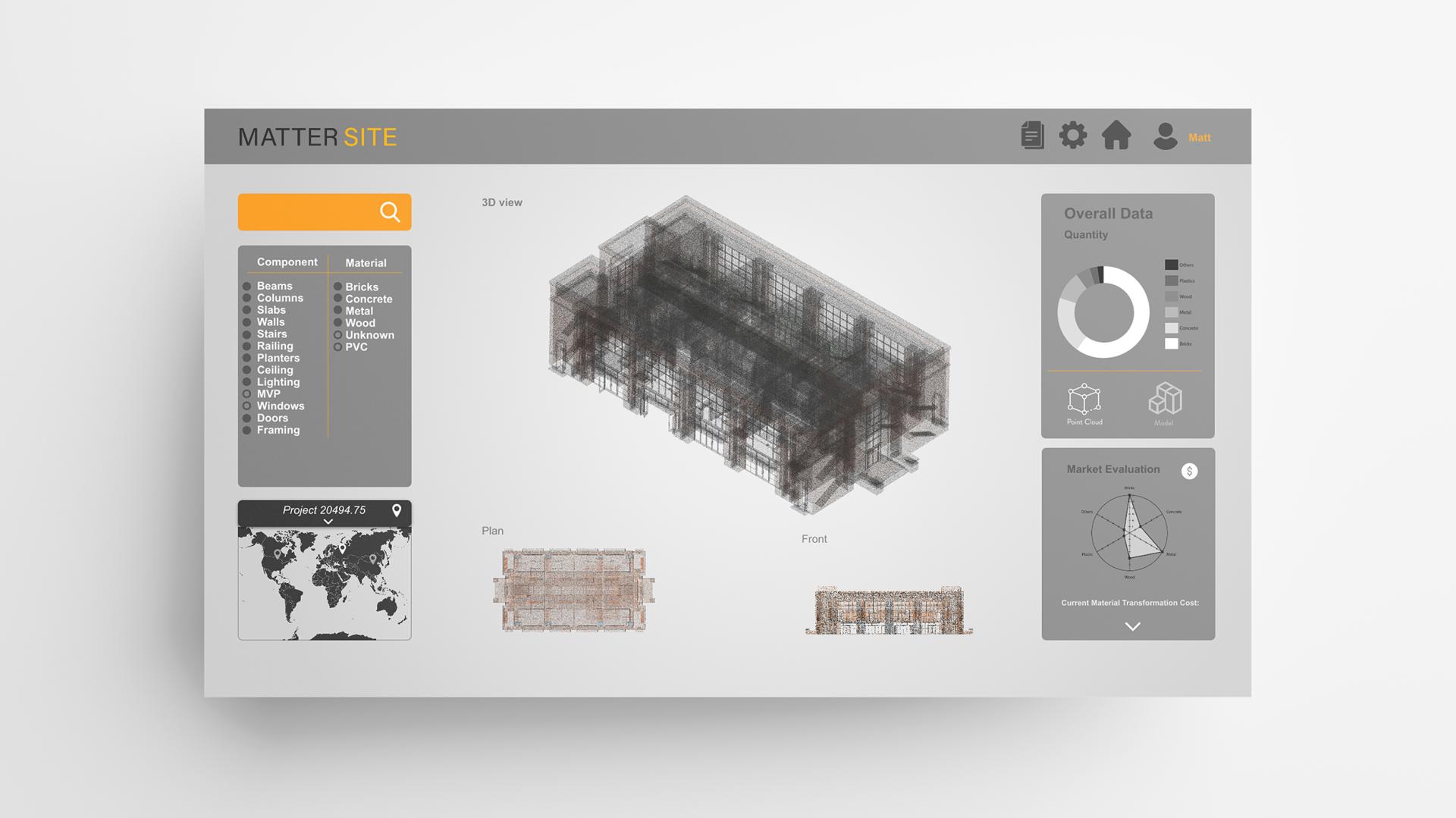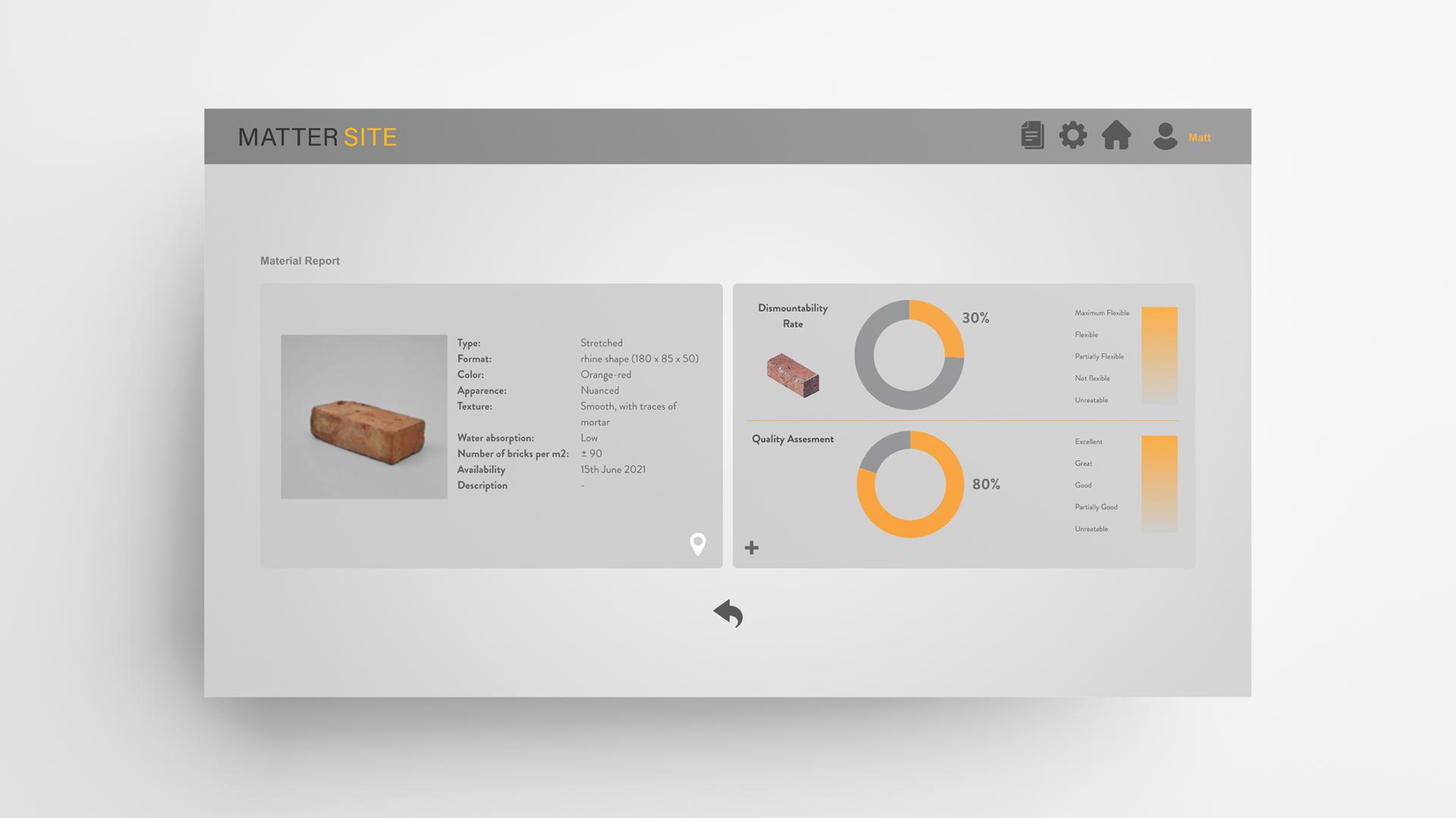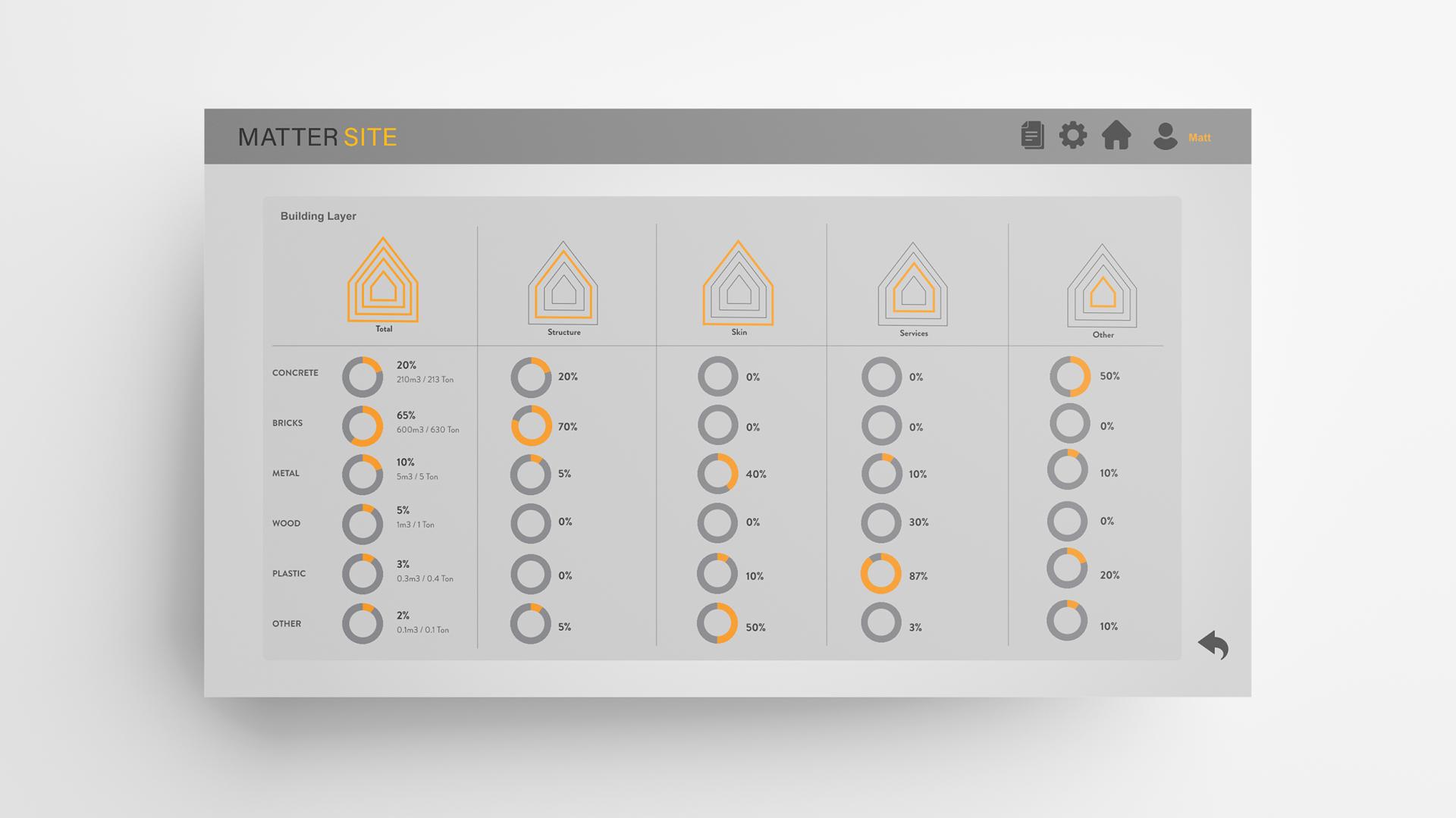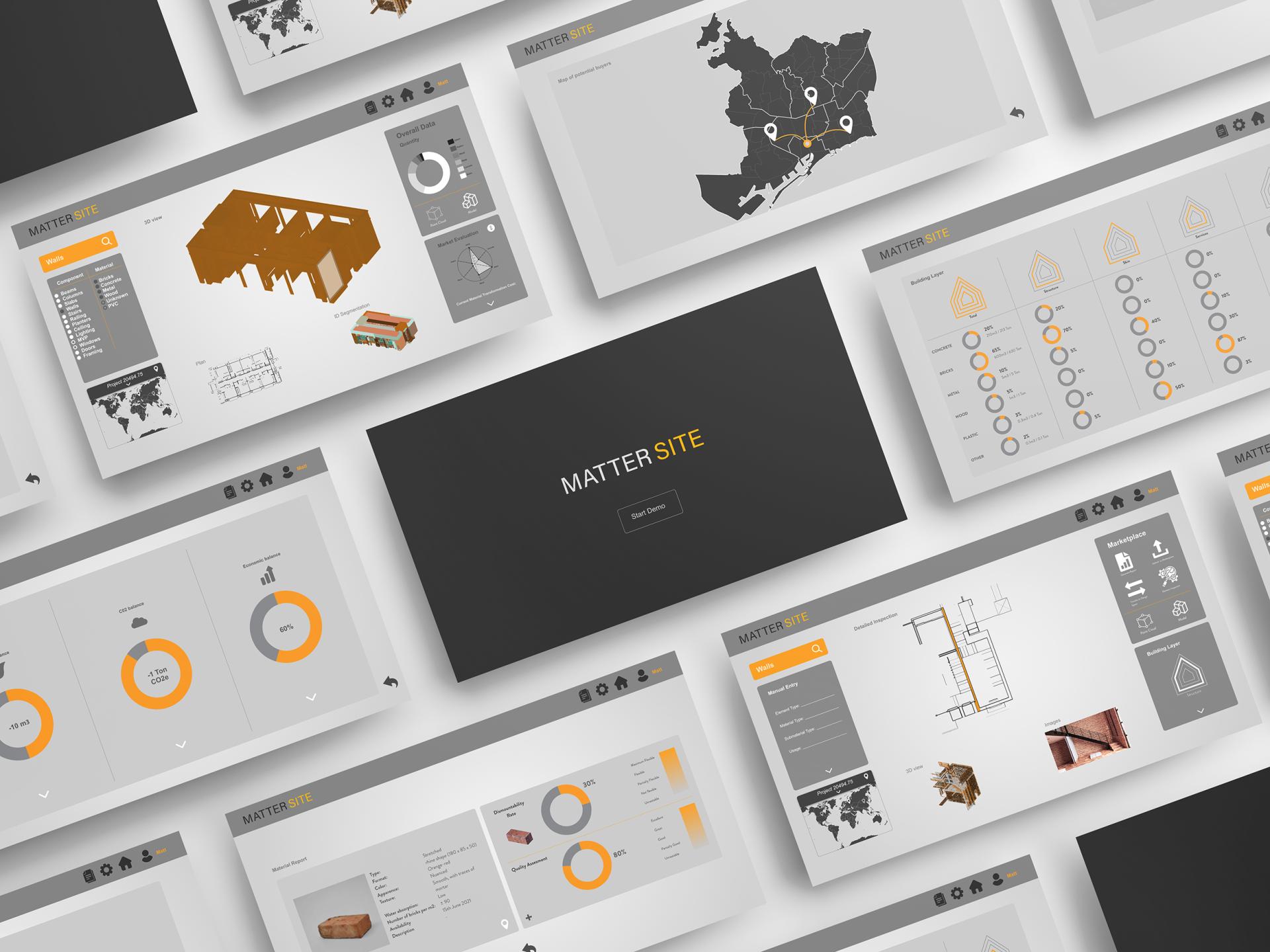Mattersite
Basic information
Project Title
Full project title
Category
Project Description
Mattersite is an AI-based digital support system that assists and unlocks deconstruction building’s data potential by creating more accurate and faster material reports to upcycle waste.
Geographical Scope
Project Region
Urban or rural issues
Physical or other transformations
EU Programme or fund
Which funds
Description of the project
Summary
Mattersite is a digital support system for conducting the deconstruction and demolition of buildings, supporting a circular economy transition for the Construction and Demolition Waste (CDW) sector. Mattersite’s process regards buildings as material stocks with intrinsic digital inventories and employs low-cost data acquisition and cutting-edge machine learning algorithms to digitalize the pre-demolition site. Our technology increases recovery potential and confidence in reclaimed materials, improving the upcycled material supply’s quality, value, and security.
The project develops a digital decision support system for pre-demolition sites, integrating digital reality capture tools and processes (3D scanning, imagery localization, and point cloud classification) that help define the most sustainable and economic deconstruction and recovery strategy for a building. This process is divided into five steps: building inspection, geometric reconstruction, classification and localization, BIM integration, and the planning interface. Mattersite quantifies and locates materials into material reports using imagery-based machine learning techniques. The resulting output assists the mapping of material flows of products and materials from buildings undergoing renovation, redevelopment, or deconstruction, and to assess, even before the work begins, their potential for reuse and recycling. Once the results of the information gathered about each material are validated with a harvest expert, the value and security of upcycled material supply can potentially improve, reducing the time spent on manual classification and quantification.
Key objectives for sustainability
Construction and Demolition waste accounts for over a third of all waste in the EU and, as an industry, is responsible for over a third of greenhouse gas production. Disrupting this material-into-waste flow can reduce the extraction of new resources, lessen the embodied energy of new manufacturing and production, and maintain the value of material products to contribute to local economies.
Techniques and technology for the reuse and recycling of materials in this stream have already been developed yet have not seen widespread adoption in the industry. A significant hurdle to adopting these methods is the lack of large-scale and reliable information about the available materials, making the process appear economically risky. Necessary information includes the difficulty of extraction, guarantees of structure capabilities, and accurate inventory counts.
By better-informing deconstruction groups, designers, and marketplaces, respectively, and thus better matching the supply to the building stock demand using this information, the community activates more sources of high-value assets and materials, giving those resources useful second lives and market viability. Shifting the material flows into tighter local cycles will reduce the overall body of CDW waste, future extraction, and embodied energy requirements and gain the most value from the embodied carbon already present in the material's first life. Our system reduces this barrier to entry for interested building owners and demolition groups, interrupting the waste flow at the industry level.
Key objectives for aesthetics and quality
Contemporary urban construction practice treats each building as an entirely new production and often disengages from traditional processes and resources. Connections to a local or contextual style are visual, with detailing and ornamentation mimicking modern techniques. However, we seek a connection to traditional methods.
Traditional urban building methods maintained a lineage of materials from one construction to the next over time from one construction to the next, unlocking the new value of materials after a single lifetime and preserving the physical fabric and history of the city's components. Reusing elements of design and craft from recovered work can contribute to a new context and style. In Europe, more than a third of the residential built environment has been built before 1960, leading to a varied fabric of style and material. While discussing the embodied energy of a building's materials, we should also consider the 'embodied culture' within each piece, an underlying resource that should not be discarded.
Additionally, increasing the public perception of existing materials' inherent value can grow the desire for renovation and restoration over demolition. Maintenance of the historic fabric, combined with other local materials when necessary gives rise to a revived urban aesthetic.
Key objectives for inclusion
One of the main challenges of using secondary raw materials is the uncertainty on the recovery potential of reclaimed construction products and materials, regarding their final quantity and quality. The second pressing challenge is the lack of predictability and confidence in the supply and demand of recovered construction stock. Thus, poor digitalization of the sector makes it harder to predict and connect the available material in building stocks with the marketplaces for new construction.
To increase accessibility to reuse material practices, Mattersite works on materials passports of the already built environment, which is usually an ignored phase during a building’s lifespan, and so far primarily undocumented. It does so by exploring the pre-demolition audit process to understand the fundamentals of harvesting materials. We plan to embed and augment simple and repetitive tasks like identification of materials to focus on critical qualitative issues of the components, reducing the entry-level qualification for end-stage building assessment. The availability and utilization of captured data are keys to developing technical material loops and increasing affordability on reusing CDW waste.
As the project expands its user's baseline to secondary resources manufacturers and urban planners, the building inspection or data capture process can scale quickly through the already implemented mobile application, potentially empowering citizens to contribute to regional databases about their built environment. As the technology becomes more widely adopted, its critical data can support and evaluate regional material flow mapping to better connect the supply/demand market decisions, material sourcing policy, and city planning for infrastructure to develop a circular transition further.
Physical or other transformations
Innovative character
Mattersite recognizes the opportunity of environmental, economical, and social benefits from urban mining practices, especially in European countries. The construction industry can become a catalyst for resource-efficient practices by acknowledging and acting on the major steps to fill the informational gap of relevant material data on the urban centers. By filling this gap, high-quality upcycling can increase while at the same time reducing the need for primary raw resources.
The project advances the fundamental paradigm shift of the current economical and social model for material production and sourcing. The adoption of reused components and materials from old buildings is already on its way, by facilitating informed decisions on design processes from local anthropogenic sourcing and better understanding regional material flows, an evolved aesthetic rooted in availability will continue to grow.
It is the project's vision to empower local governments and promote richer circular networks in the private sector, through a ready-to-use application that can facilitate the capture and processing of most relevant material information for the industry. What gets measured, gets managed, and extends the utilization of reused components and material databases will inevitably widen the door to new stakeholders in the circular value chain.

